Machu Picchu Whispers of the Incas
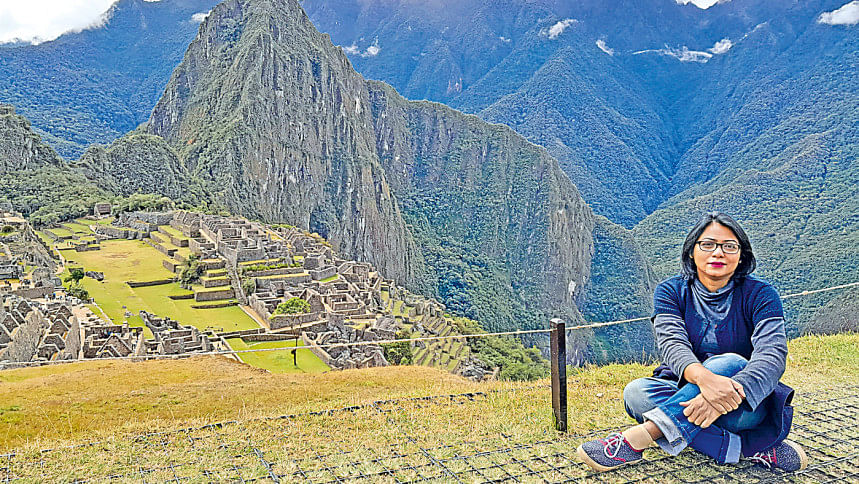
I was in the ancient city of Cuzco, Peru -- once the capital of the Inca Empire -- standing at the train station with the Andes rising like ancient guardians all around me. My next destination was Aguas Calientes, better known as Machu Picchu town.
The crisp mountain air made me thirsty. Grabbing a bottle of water from the only coffee shop there, I eagerly waited for the train journey to begin.
The train was like a colourful serpent. Painted dark blue with yellow skirting near the wheels, it slithered along the mountain rails, climbing steadily through misty valleys. As we departed, three passengers -- two women and a man -- hurried aboard and joined the compartment. Their long, tangled hair immediately caught my attention. They looked like modern-day hippies. The man's hair reached down to his knees, much like the wandering bauls in our Lalon Akhras.
We sat facing each other. As is often the case with strangers, the conversation began with the question of nationality.
"Are you Peruvian?" I asked.
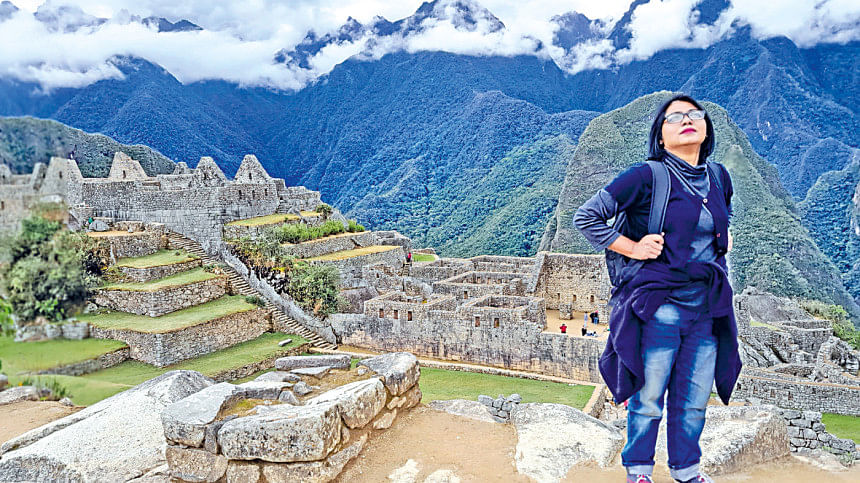
"Not really. We're from Italy," one of the women replied.
"Italy! I've visited your country! The Colosseum, Venice … Wandering through Venice, I felt like Shakespeare's Portia from The Merchant of Venice. And the Vatican? It left me speechless!"
They beamed with pride. To my delight, they spoke fluent English. In this Spanish-speaking part of the world, hearing English is a blessing. Their sudden arrival felt like a sign -- messengers sent by the Inca god Viracocha, guiding me into his ancient realm.
By evening, the train rolled into Aguas Calientes. I checked into my hotel, had dinner, and rested for the adventure that awaited.
The next morning, after breakfast, I met my local guide, Fevi. Our first stop was the town's Plaza Principal, or Main Square, where a towering statue of the Inca emperor Pachacuti stood with regal defiance. I posed for a picture with him, already feeling like part of the story.
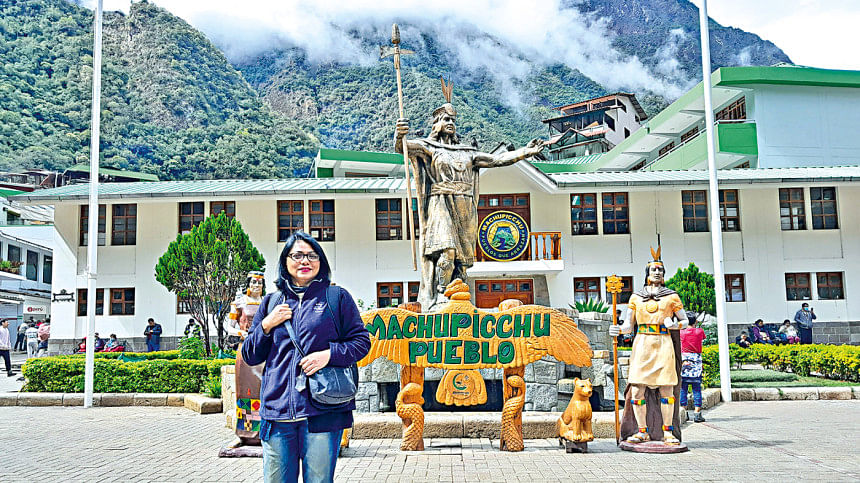
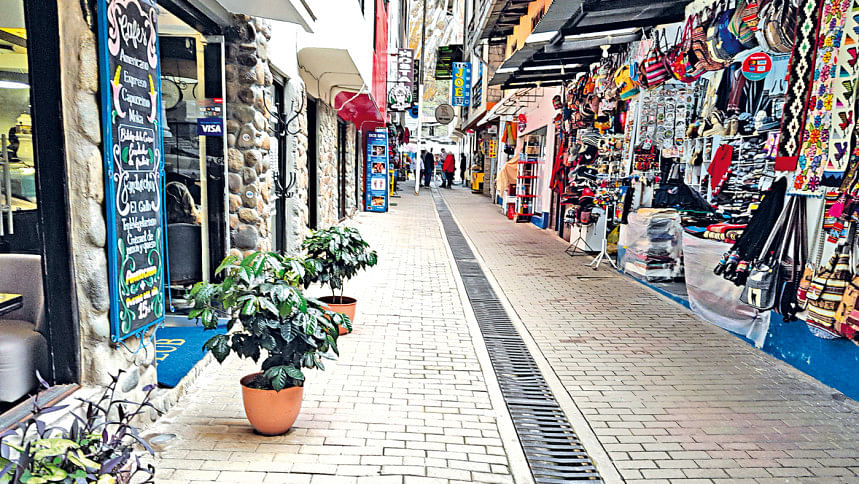
Soon after, we boarded a bus for Machu Picchu. Just as I settled into my seat, a woman with long hair and lively eyes sat next to me. She was from Brazil, her name a musical string of syllables I couldn't manage. "Your name is too heavy to call," I joked. She laughed. "You can call me Didu."
As Didu and I got to know each other, the bus climbed slowly along the narrow, winding road. The higher we went, the more surreal the landscape became.
About 30 minutes later, we reached the entrance to Machu Picchu and began hiking on the famous Inca Trail—one of the world's most iconic and demanding treks. The path was uneven and rocky, and though I struggled at times, my excitement pushed me forward. The famous ruins of Machu Picchu sit roughly 7,900 feet above sea level.
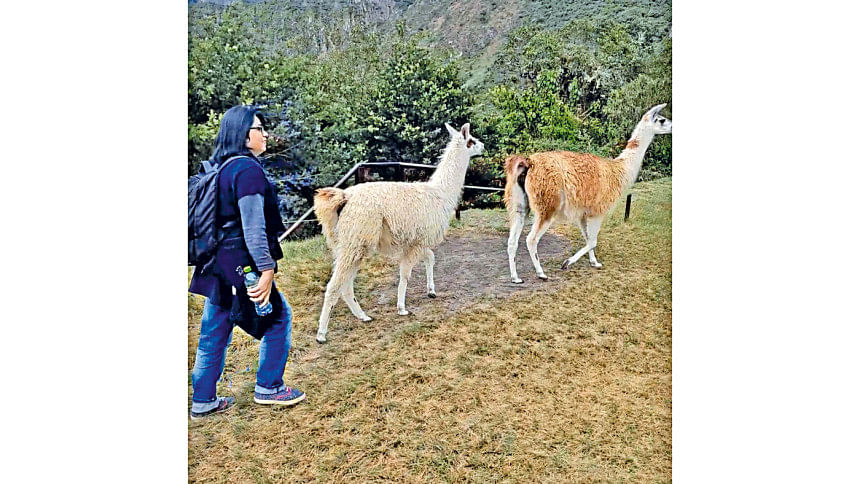

Walking that ancient trail with llamas and alpacas—animals sacred to the Andes—felt special.
Our first stop was a high viewpoint overlooking the Central Plaza of Machu Picchu. The view was stunning – no wonder why tourists jostle here for the perfect photo. I was lucky to have Didu with me; she gladly snapped a few pictures for me to treasure forever.
Machu Picchu is cradled by three great mountains: Machu Picchu, Huayna Picchu, and Putucusi. The Incas believed these mountains were Apus -- sacred spirits or gods. With three Apus surrounding the site, they believed the citadel was protected by divine forces.
Archaeologists believe that Machu Picchu, often called the "Lost City of the Incas," was built in the 15th century during the reign of Emperor Pachacuti. Hidden among the jagged peaks of the Andes, archaeologists believe it served as a royal retreat, religious site, or possibly both. Remarkably, the site lay undisturbed for centuries until locals guided American explorer Hiram Bingham there in 1911.
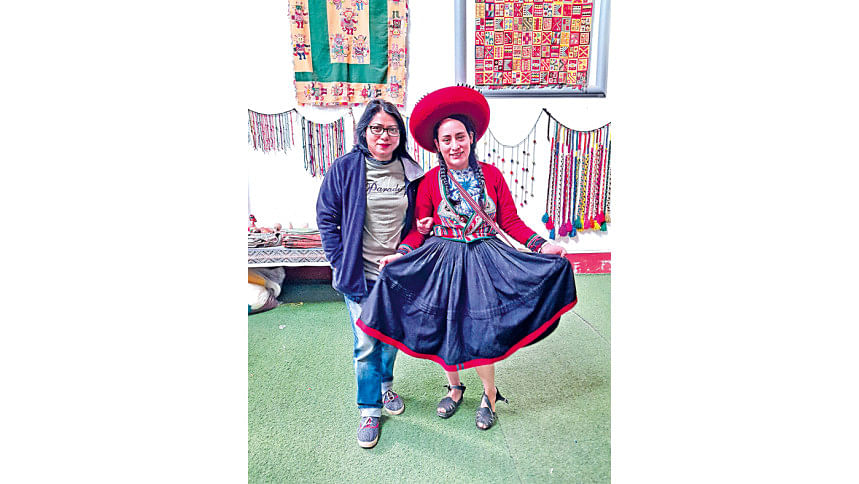
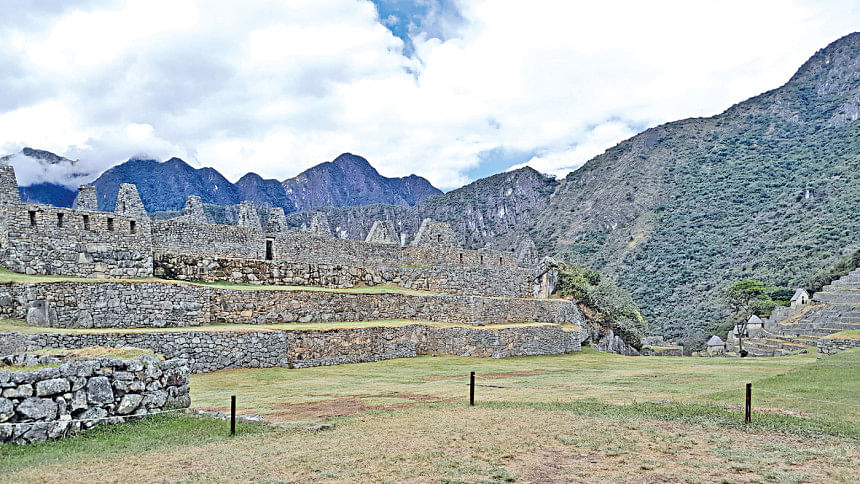
One thing was in my mind and I couldn't but ask Fevi: "How did this colossal place stay hidden for 500 years?"
"Machu Picchu lies low, hidden by steep mountains," he said. "After smallpox hit the Andes before the Spanish arrived, many died, and the area emptied out. The remoteness of the site helped keep it untouched."
Soon, we reached the ancient walls of the city, built using a technique called ashlar -- stone blocks cut so precisely they fit together without mortar. Even after six centuries, these structures stand firm, a testament to the Incas' mastery of stonemasonry. They built their cities without cranes, using only human ingenuity and simple tools.
After wandering through stone pathways and doorways, we reached the Sacred Plaza, which resembled the courtyard of a village home. Two temples stood there: the Main Temple and the Temple of the Three Windows. The Incas believed these were gathering places for the gods. Inside the Main Temple were 17 trapezoidal niches -- small cupboards where offerings were placed. Religious ceremonies were conducted here to honour their deities.
Not far from the temples, we visited the agricultural fields used by the Incas. Carved into the mountainside, the terraces resembled the tiers of the Roman Colosseum when viewed from above. I was astonished by the Incas' systematic farming. Each level received a different amount of sunlight, allowing for different crops to thrive.
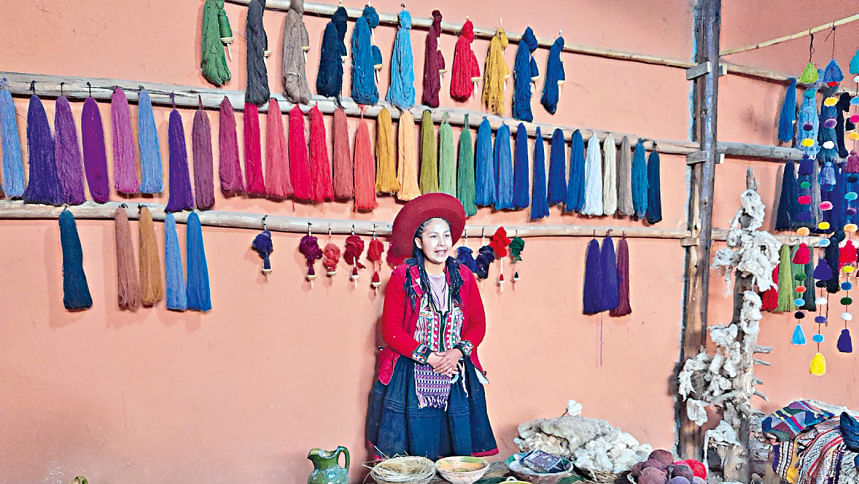
Fevi added, "We've adopted this terraced farming technique from the Incas. That's why we have 40,000 varieties of potatoes in Peru."
After hours of walking and wonder, exhaustion set in. Didu and I found a patch of grass and sat down to rest. Across the ruins, we saw a crowd gathering.
"What's going on over there?" I asked.
Fevi smiled. "That's the Intihuatana stone."
Intihuatana, often called the Sun Hitching Post, was believed to serve both astronomical and religious functions. During the winter solstice, the Incas feared the sun might abandon them. They performed rituals around the stone to symbolically "tie" the sun in place, praying it would stay until the harvest.
The most important festival in honour of the sun god Inti was called Inti Raymi -- a grand religious celebration.
Fevi told us the festival is still held every year on June 24, marking the Inca New Year. In Cusco, it's a public holiday. People wear traditional clothes, perform dances, and re-enact Inca rituals.
The sun began to dip behind the peaks as we made our descent. At the base, I said goodbye to Didu, feeling grateful to have shared the experience with someone so full of life.
As I walked toward the train station, the grandeur of the ancient city still echoed in my mind.

 For all latest news, follow The Daily Star's Google News channel.
For all latest news, follow The Daily Star's Google News channel. 



Comments